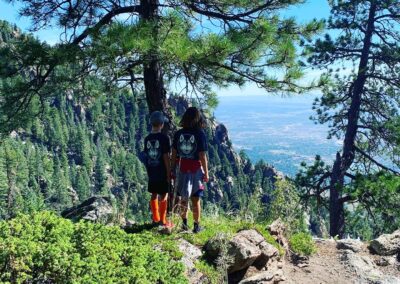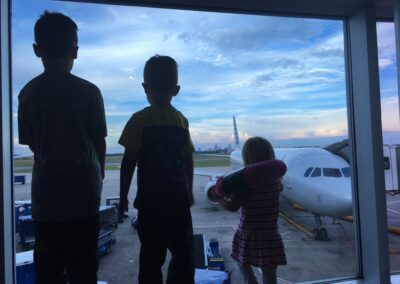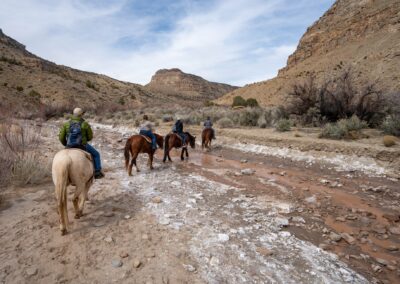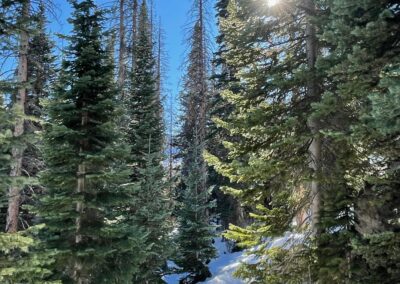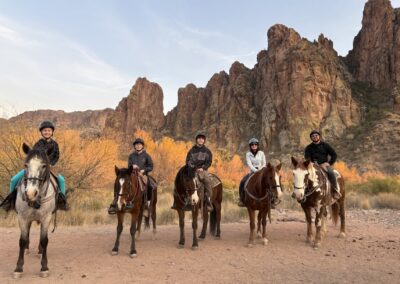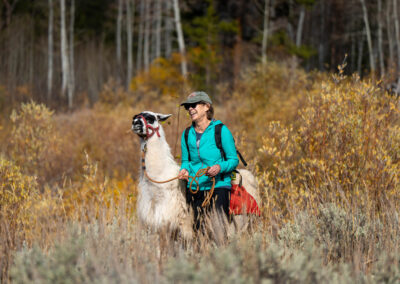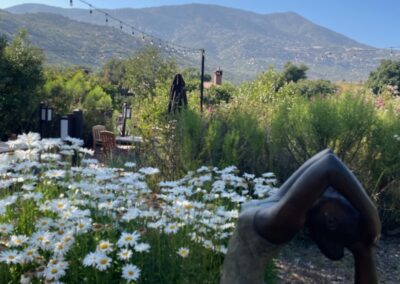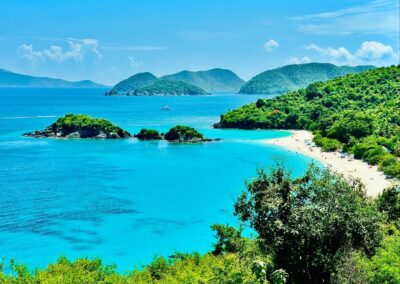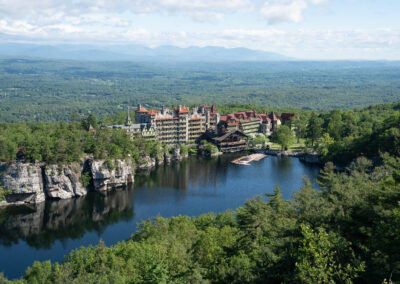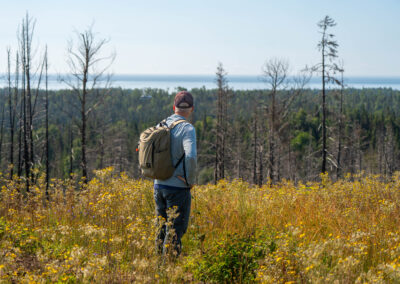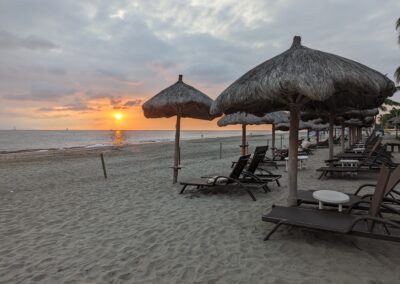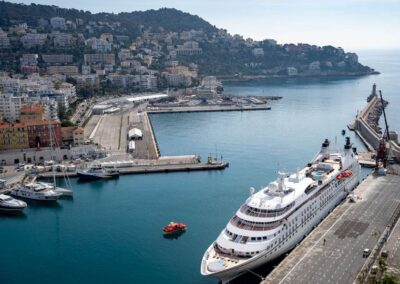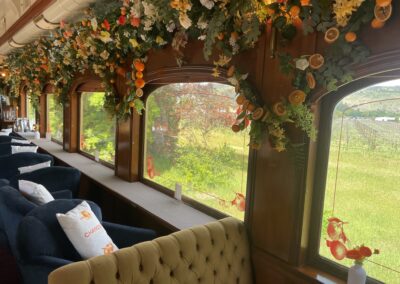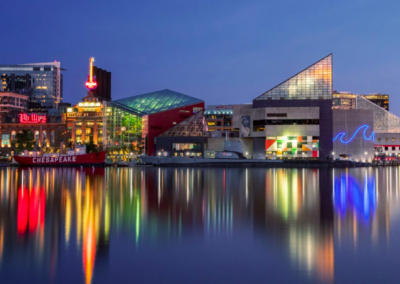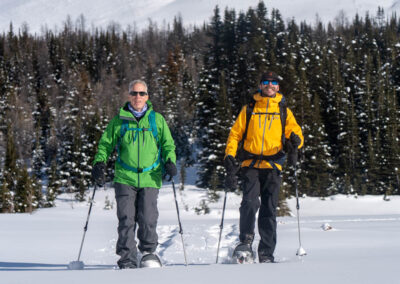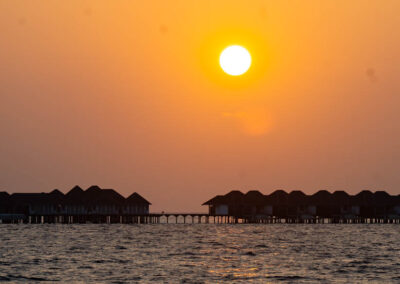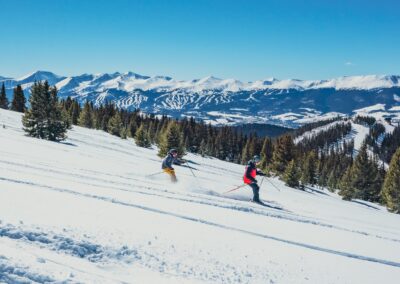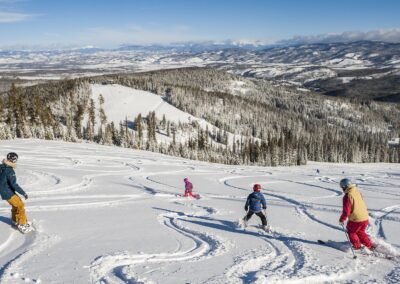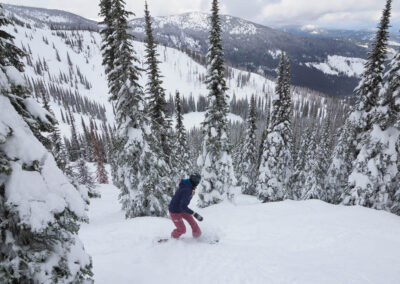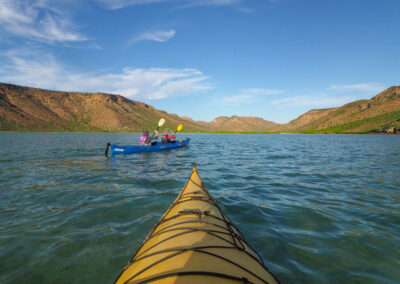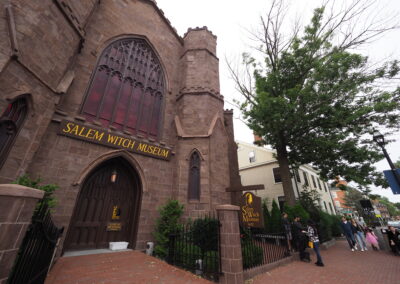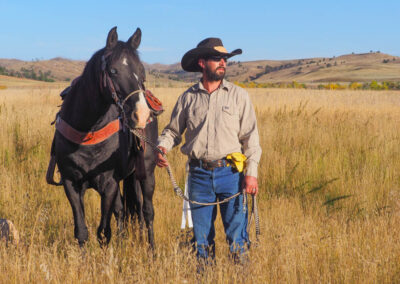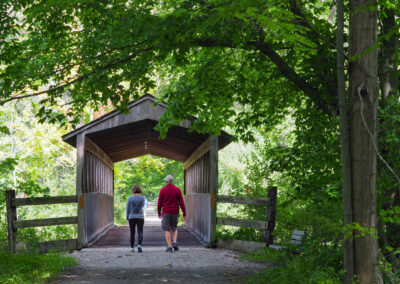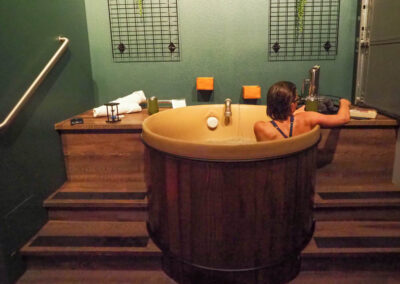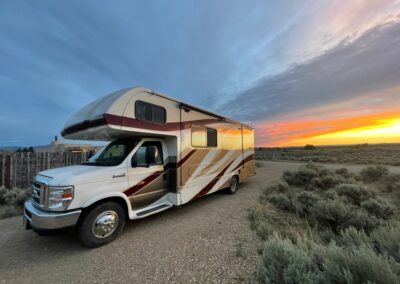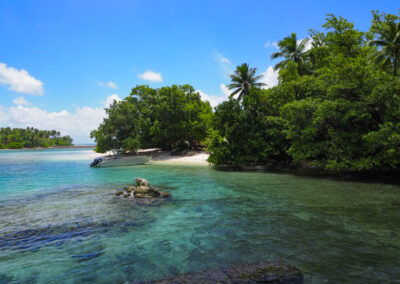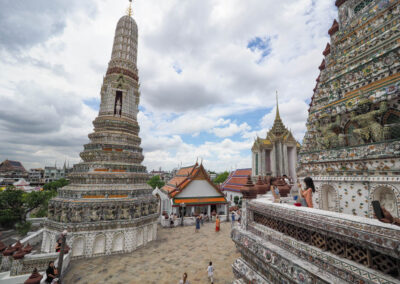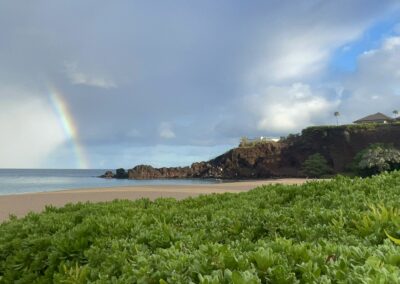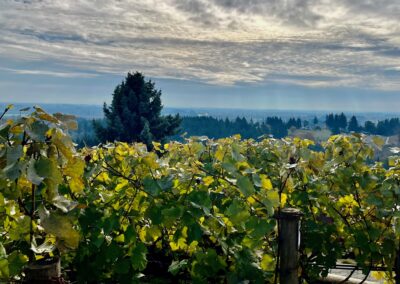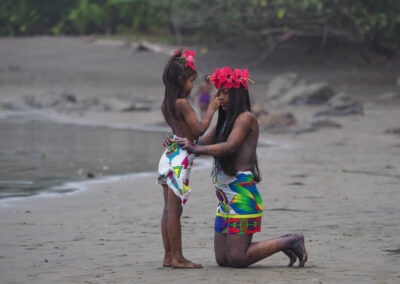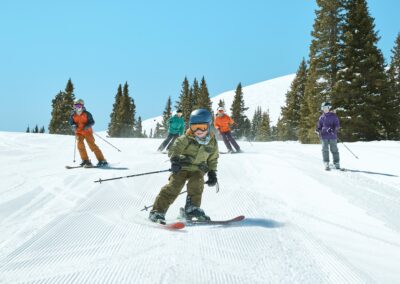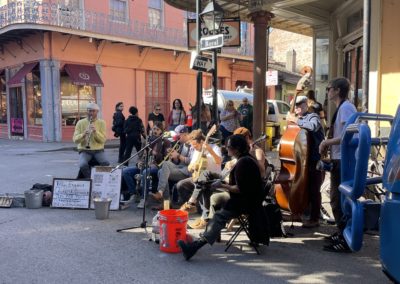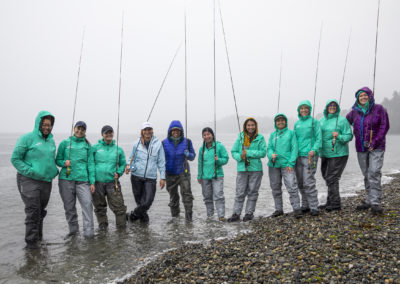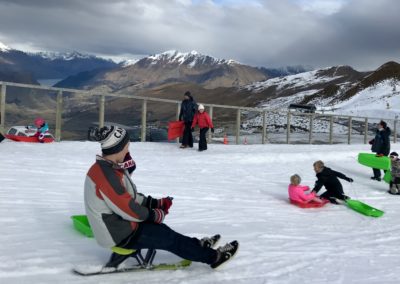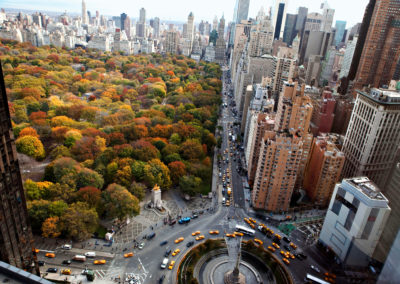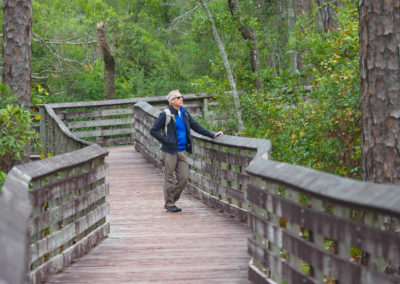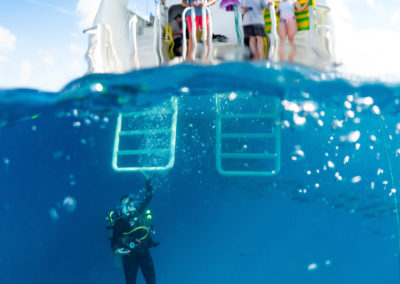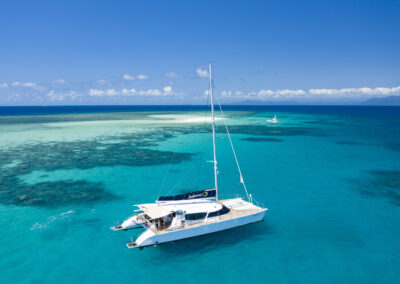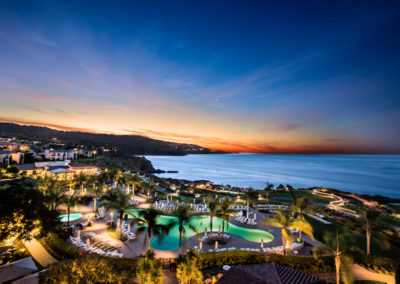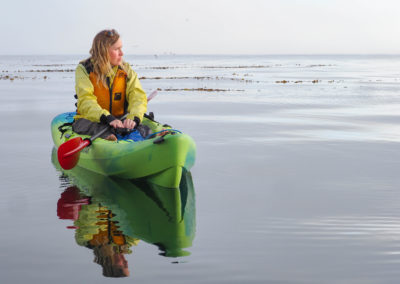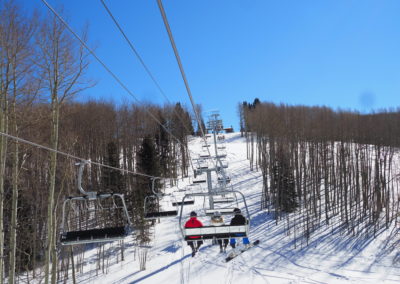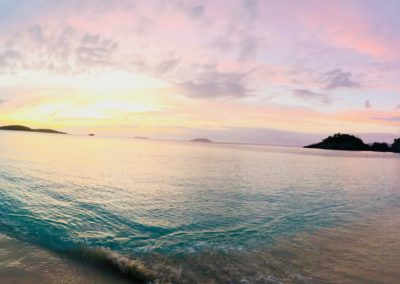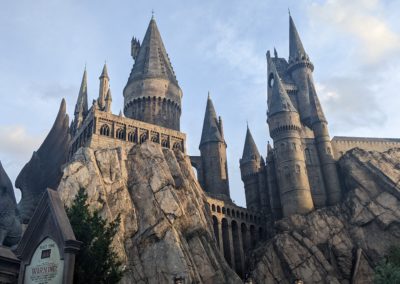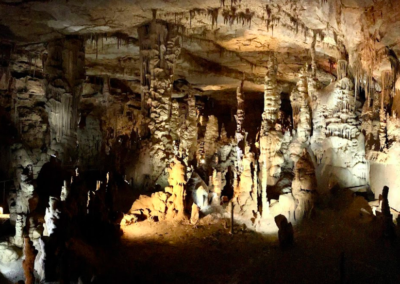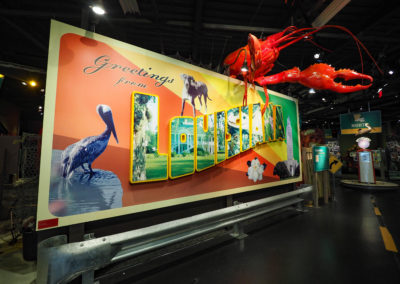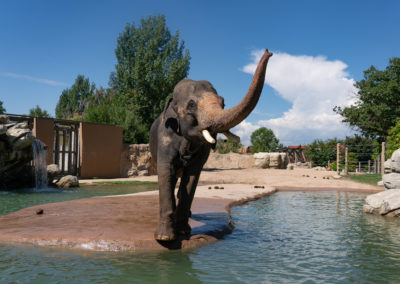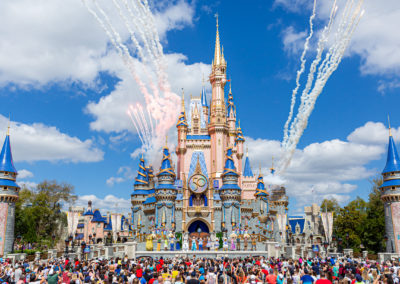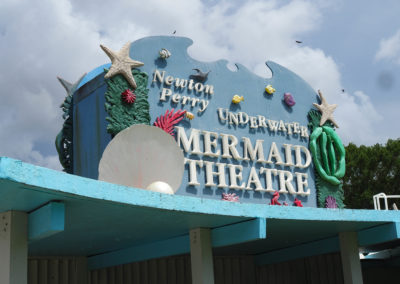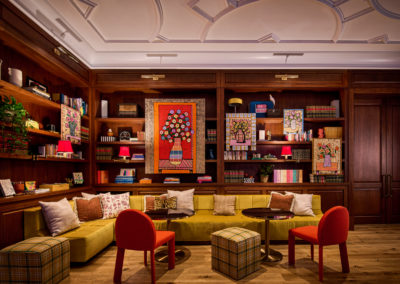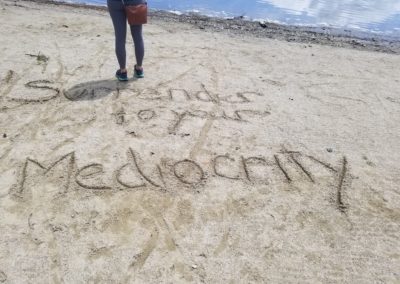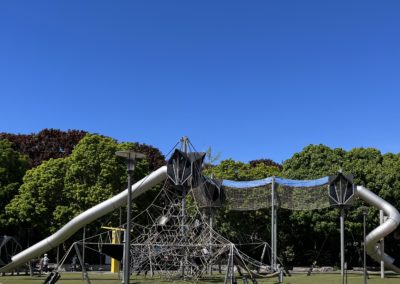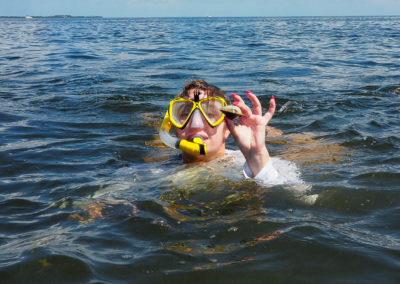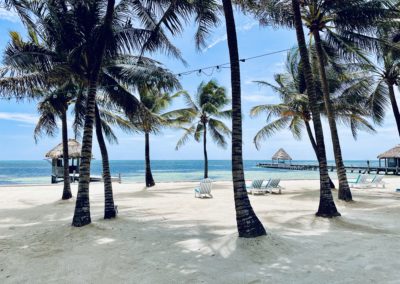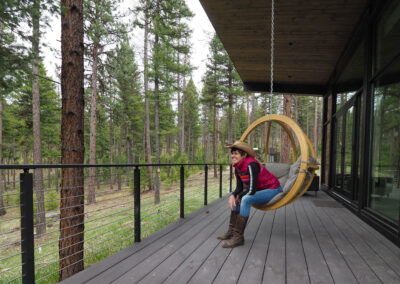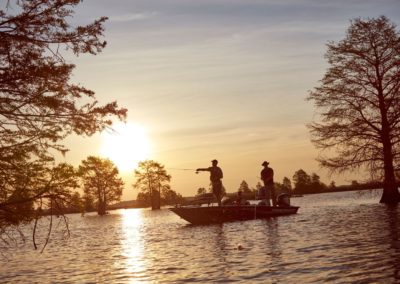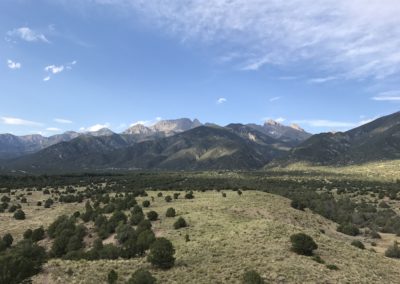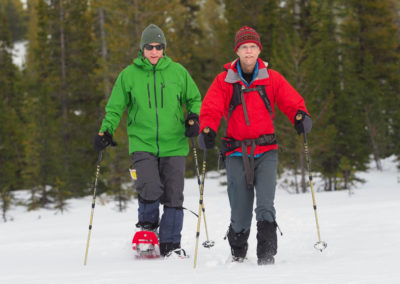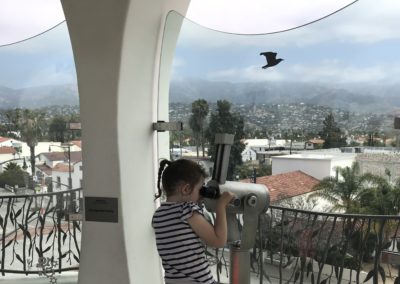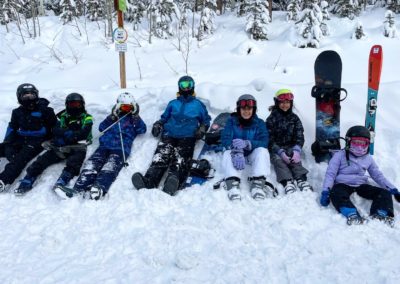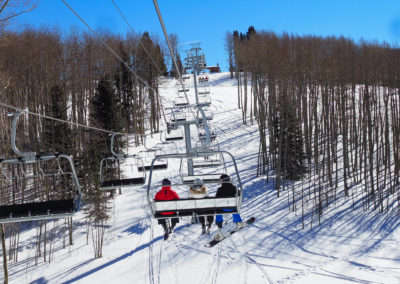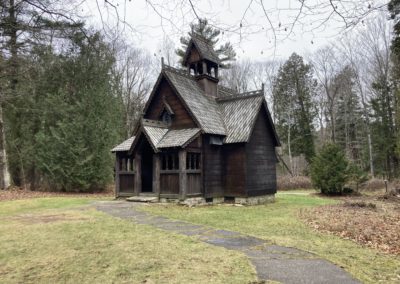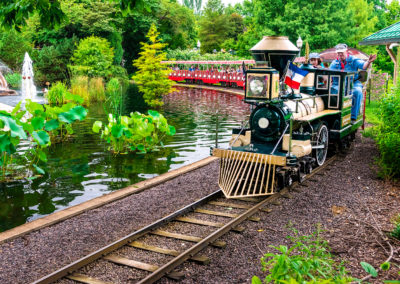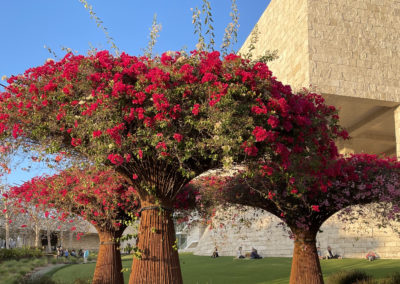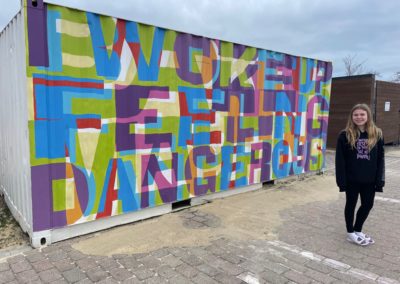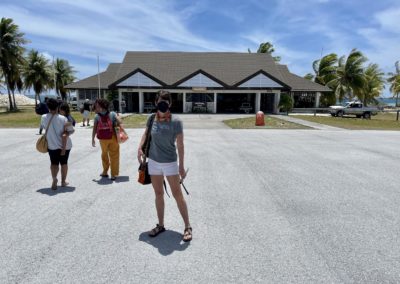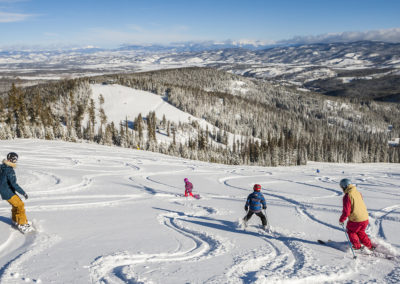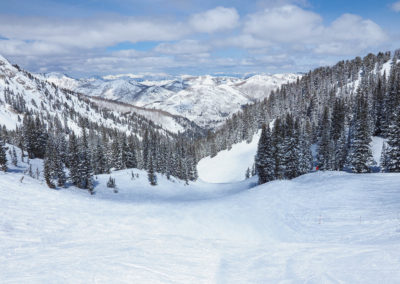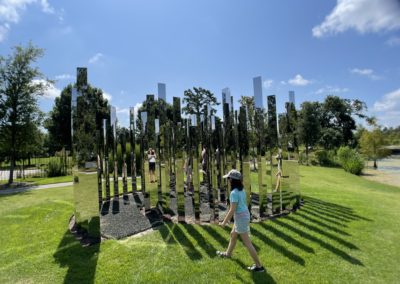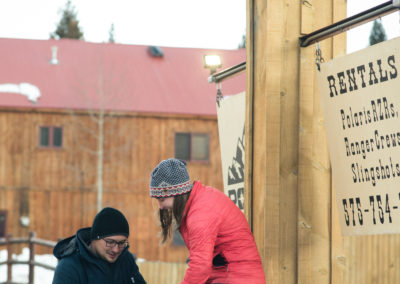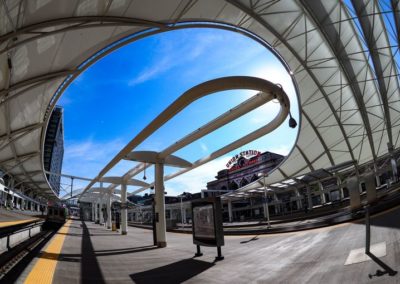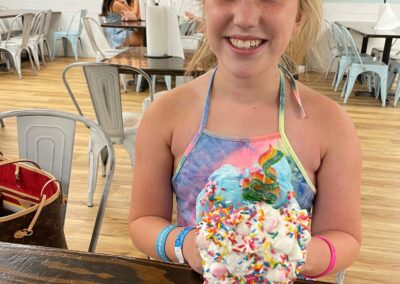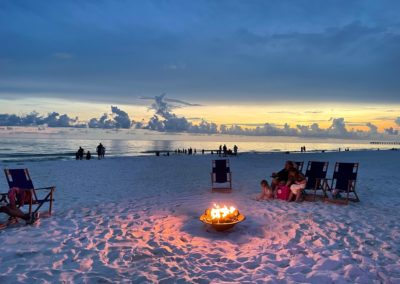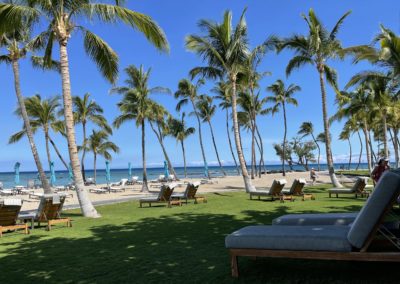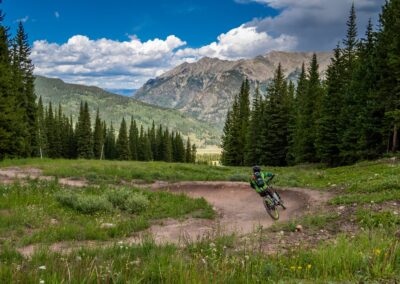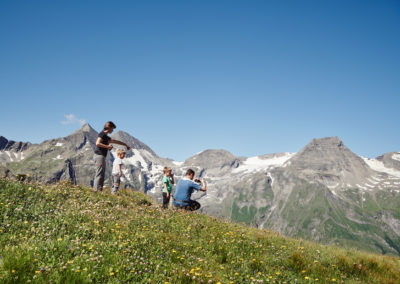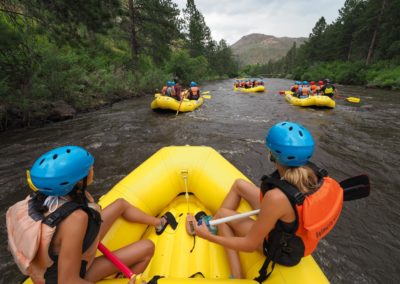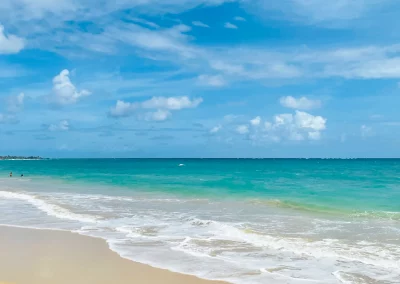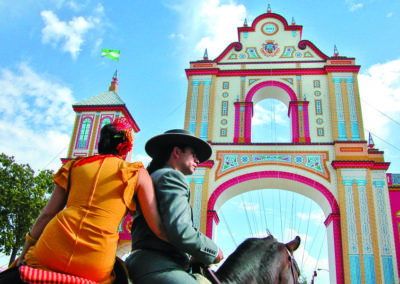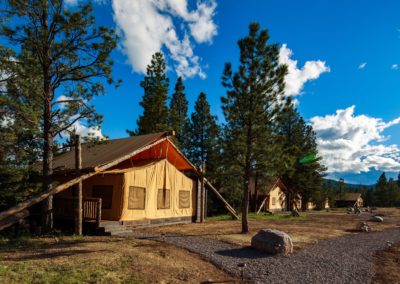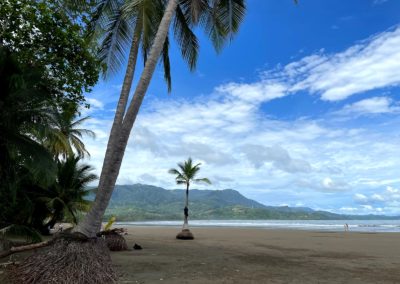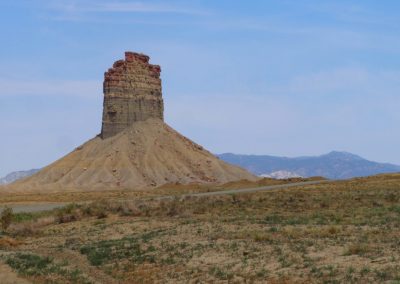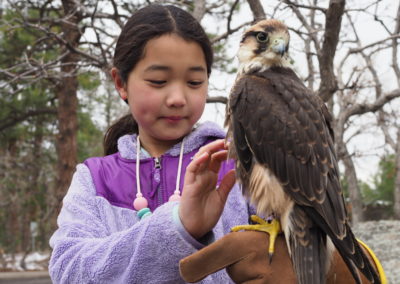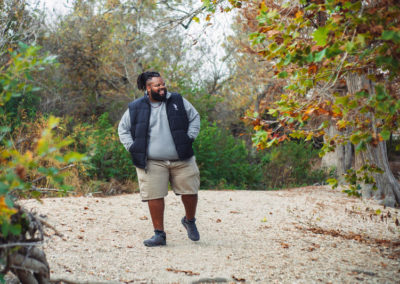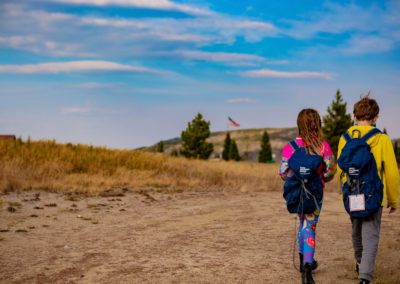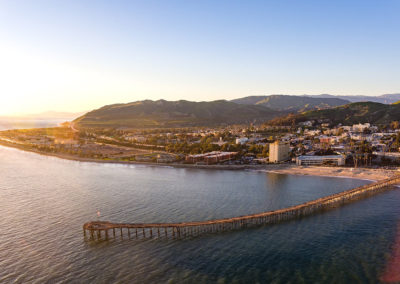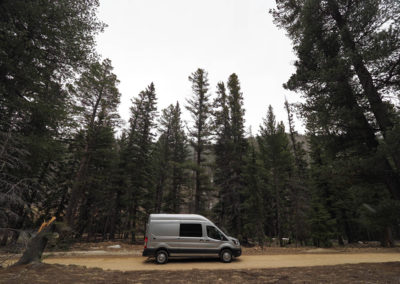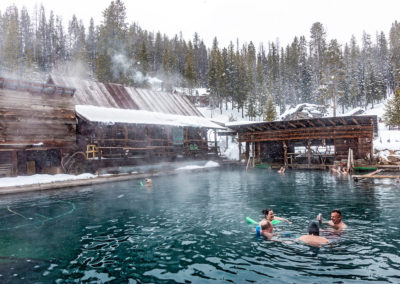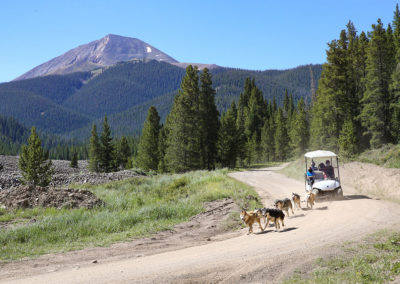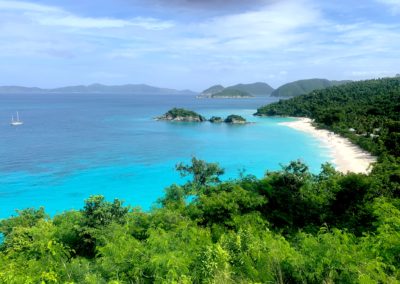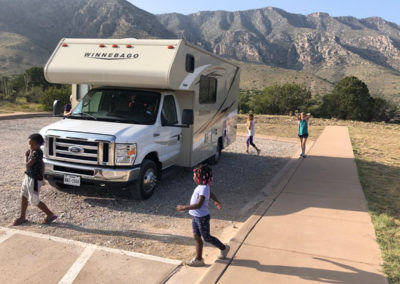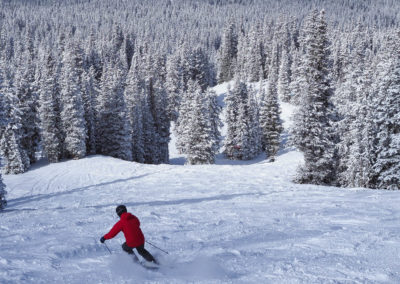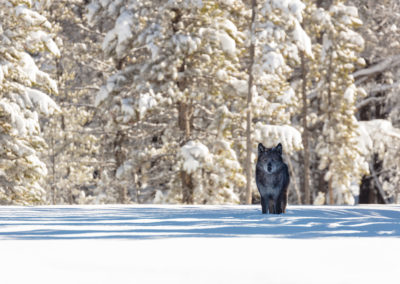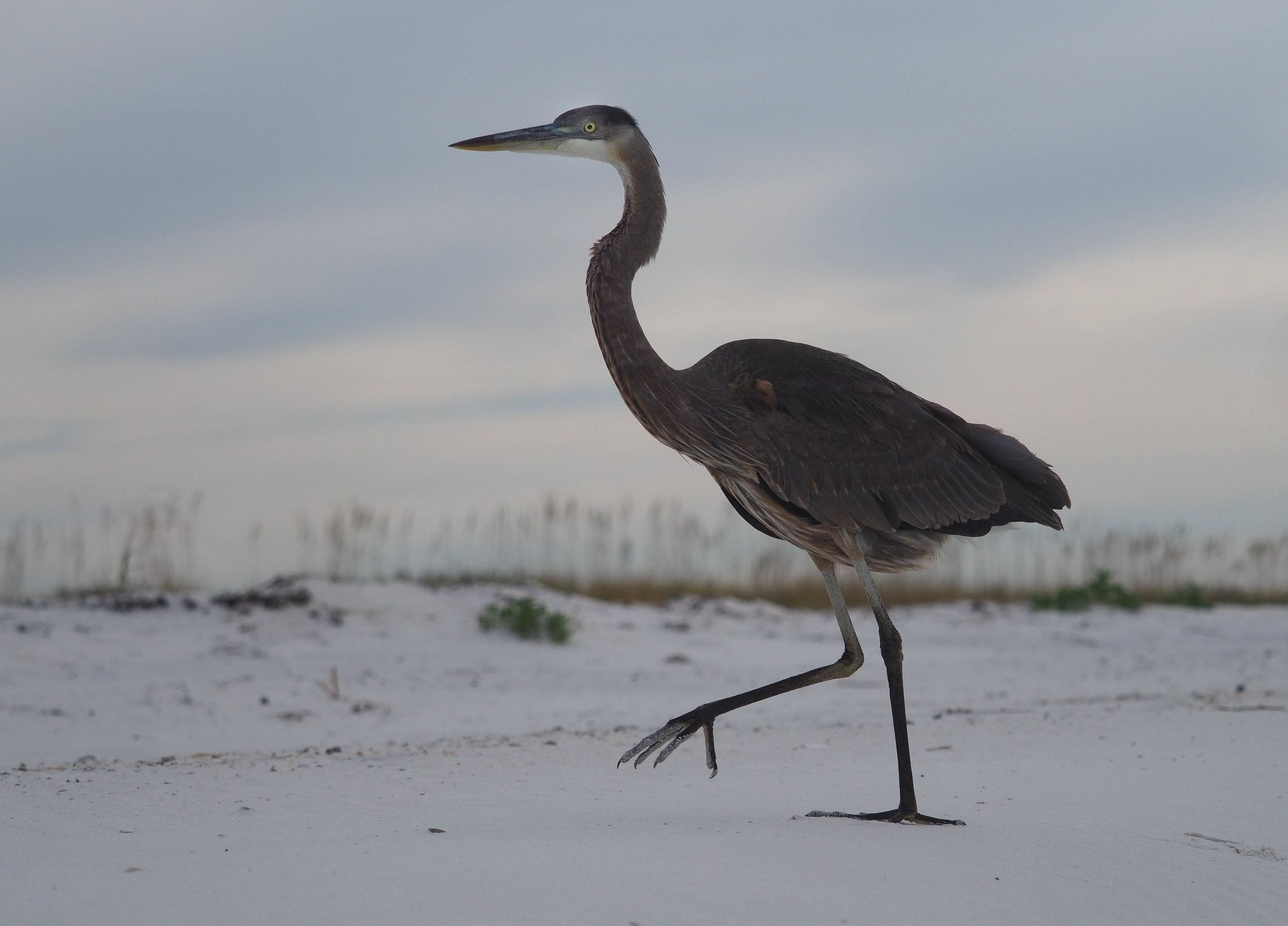
A blue heron marches across the beach at Gulf Islands National Seashore. Pam LeBlanc photo
Most folks head to Pensacola in the summer, lured by the prospect of beaches, boats and bikinis.
I took a November trip instead. That didn’t stop me from spearfishing off the coast, kayaking to a barrier island, exploring an old fort, and admiring carnivorous plants at a state park. In between all of that, I explored the bustling downtown district. Pensacola boasts a burgeoning culinary scene, plus shops, galleries and museums.
Below are the highlights of my three-day visit.
Related: Scalloping, saltwater springs and seashell strolls on Florida’s Sports Coast
Explore a pre-Civil War fort near Pensacola

Chris LeBlanc walks through a dark tunnel at Fort Pickens, at Gulf Islands National Seashore near Pensacola, Florida. Pam LeBlanc photo
Slaves built Fort Pickens in the early 1830s to protect Pensacola Bay. At the time, it stood as the largest brick structure on the Gulf of Mexico. Today the five-walled fort still stands guard, although it’s missing a section of wall that blew up in an accident in 1899.
Spend some time creeping into dark, unlit passages and climbing up to see the huge cannons perched atop its walls. An educational plaque explains that Geronimo was held captive here in 1886. The Apache medicine man became a defacto tourist attraction, drawing hundreds of visitors a day.

Slaves built Fort Pickens in 1834. Pam LeBlanc photo
While you’re at the fort, located inside at Gulf Islands National Seashore, take a hike on the beach. You might catch a glimpse of the Blue Angels, the U.S. Navy Flight Demonstration Squadron. The team flies overhead during training runs on select days between March and September. The park offers camping, hiking and a boardwalk, too.
Dinner and a stroll in downtown Pensacola
Get a taste of some of Pensacola’s finest restaurants, along with a side of history, when you sign up for the Seville Stroll led by local amateur historian and foodie Duel Christian.
Christian, whose great-grandfather was a naval aviator and grandmother was president of the Pensacola Historical Preservation Society, loves to show off his hometown and share its history.
We sampled fried egg rolls made with braised beef at 86 Forks. Then we moved on to dry aged steak kabobs (and live jazz) at The District, and tossed back slow roasted pork tacos at Calavera’s Tacos. For dessert, we tasted fudge at Bubba’s Sweet Spot, owned by golfing great Bubba Watson. The tour costs $65. All food (but not alcoholic drinks) is covered. Meet at the Kennedy Bar, which makes a mean Manhattan.
Hit the water
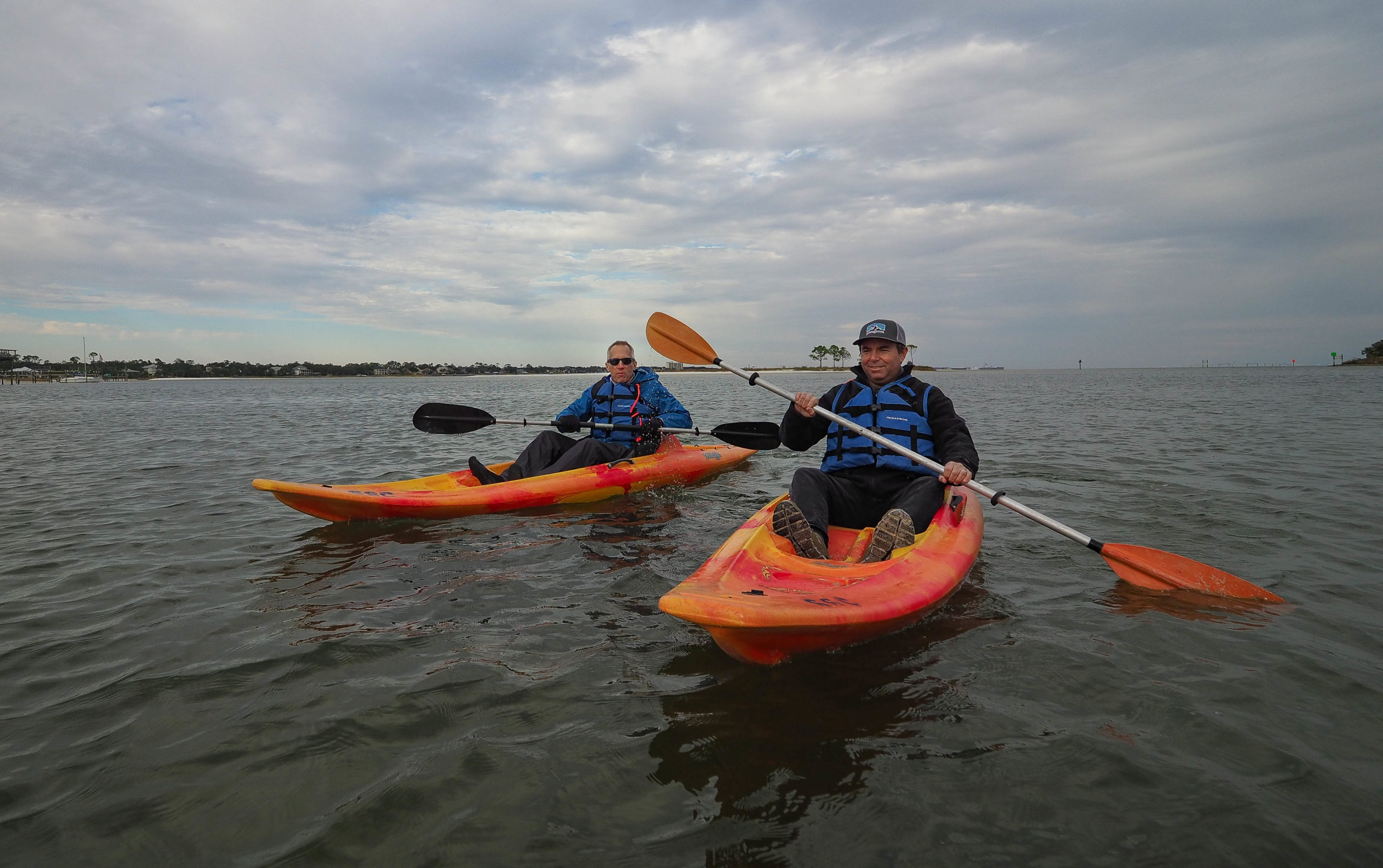
Kayakers paddle away from White Island in Pensacola, Florida. Pam LeBlanc photo
It might be too chilly to swim, but you can still paddle a kayak to some of the small islands around Pensacola. We rented plastic, sit-on-top boats from Outdoor Gulf Coast, and launched at the Navy Point boat ramp. From there, it takes about 30 leisurely minutes to reach White Island, where Davenport Bayou and Bayou Grande enter the bay. (You’ll pass a few sunken sailboats, their masts still stretching out of the water, along the way.)
We went when the tide was down and enjoyed walking on the exposed sand bar around the island as a bald eagle soared overhead.
“You can paddle in the Gulf on a calm day and see rays, dolphins and sharks,” says Outdoor Gulf Coast owner Shawn Brown, a former competitive windsurfer who grew up fishing and snorkeling here. “But I enjoy paddling to the islands because it’s a little more secluded – and you get surprise visits from the sea life.”
The company rents kayaks (singles are $35 and doubles are $55 for a half day) and standup paddleboards and offers windsurfing lessons.
“The whole idea is to share things in our own backyard that people have no idea about,” he says.
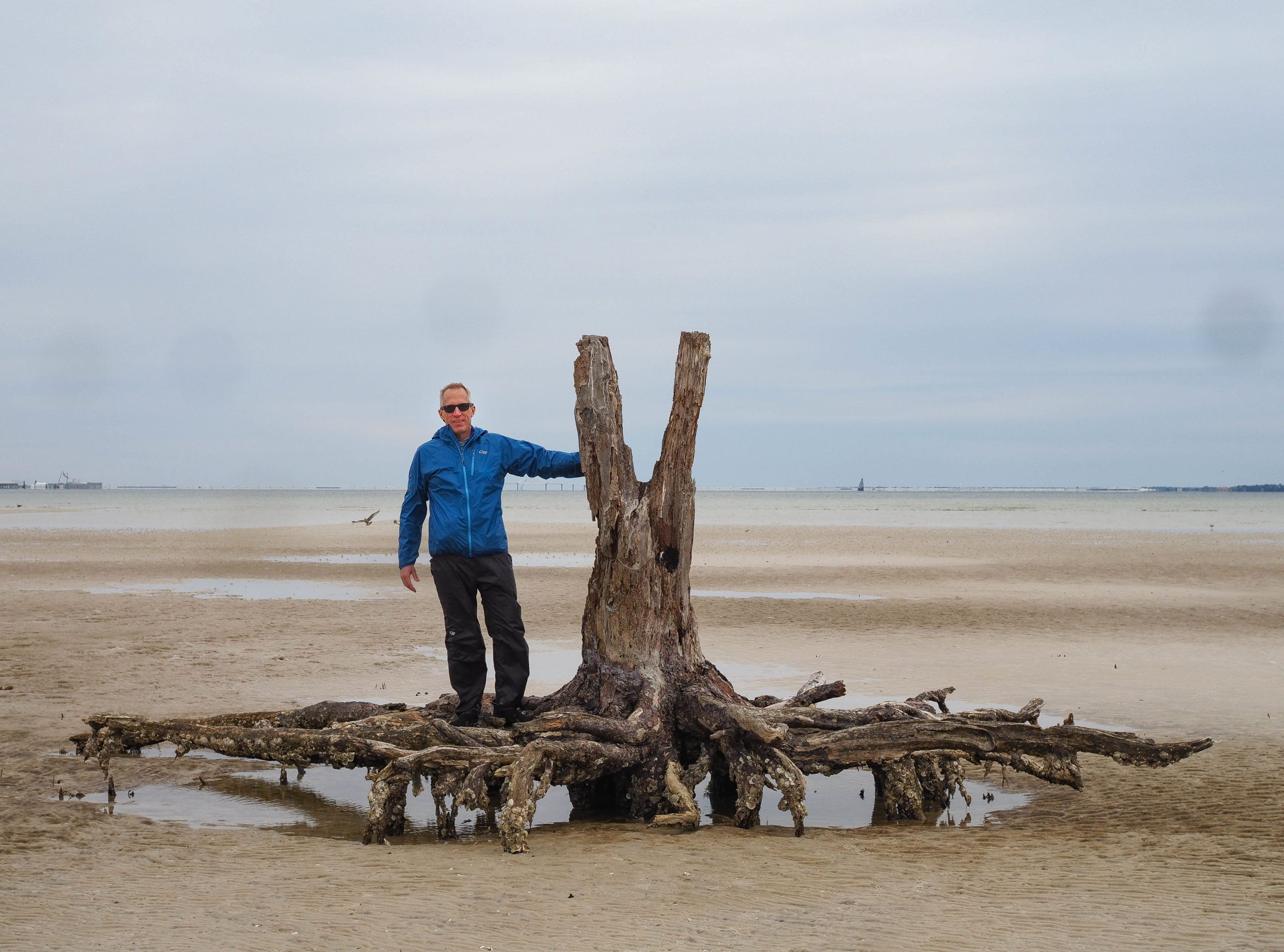
Chris LeBlanc poses near a stump after kayaking to White Island in Pensacola, Florida. Pam LeBlanc photo
Related: Destin Delights: How to Spend a Long Weekend on the Florida Panhandle
Learn some history about Pensacola
St. Augustine likes to claim the title of America’s Oldest City, and it was founded in 1565, but Pensacola’s roots run even deeper. Spanish explorer Don Tristan de Luna y Arellano arrived in 1559, establishing Pensacola as the first European settlement in North America.
At the Pensacola Museum of History, glimpse the anchor from the ship Arellano used in his voyage to Pensacola. Afterward, check out the City of Five Flags exhibit, which tells the story of the warriors, conquistadors, presidents and others who made a mark on the city. I loved sifting through the memorabilia in the museum’s replica of Trader Jon’s, a bar that catered to naval aviators from the 1950s until the early 2000s.
Then follow the red stripe on the sidewalk through downtown to learn about everything from the Spanish-built Fort San Miguel to an old grist mill on the 3-mile America’s First Settlement Trail. At each of the trail’s 20 marked stops, scan a QR code to learn about the significance of the location.
Hunt for invasive lionfish

Pam LeBlanc shows off a lionfish she speared off the coast of Pensacola. The fish are invasive and divers are encouraged to kill them. Brady Hale photo
If you’re feeling hearty and are certified to scuba dive, don a full wetsuit and join Brady Hale, founder of Ocean Strike Team, to go spearfishing for lionfish.
The beautiful, feathery-looking red and white fish are invasive here and have no predators. They’ve wreaked havoc on the environment since the early 1990s, when, scientists believe, aquarium owners began dumping them out of their fish tanks and into the ocean. Females can spawn every three or four days, producing millions of eggs each year. Adults slurp up native fish including snapper, grouper, shrimp, and parrotfish, throwing the ecosystem off balance.
We rented scuba gear from Dive Pros, boarded a boat run by Niuhi Dive Charters, and headed out on a 36-degree morning to try our luck. After a bumpy ride to a site 14 miles offshore, I wriggled into my wetsuit and leapt overboard. Hale taught me how to use a Hawaiian sling to spear lionfish at a depth of 100 feet. They’re easy to get. They hang motionless as divers approach and spear them. Exercise caution as you tuck them into a clear cylindrical tube called a ZooKeeper for the trip back to the boat – the spines on their backs are loaded with poisonous venom.
“We can’t kill all the lionfish,” Hale says. “They’re like cockroaches. You can keep them out of your house, but you have to keep going out and cleaning the same reef. The minute you stop they come back in.”
Eat lionfish!

Chef Wayan Sumadi of Sake Cafe in Pensacola shows off a platter of lionfish sashimi. Pam LeBlanc photo
Even if you can’t hunt lionfish, you can do your part by eating them.
Some chefs grill it; others sauté it. At Sake Café, which is housed in an old church in Pensacola, chef Wayan Sumadi prepared it for us three ways – as raw sashimi; paired with rice, cucumbers, crab, and roe in sushi rolls; and fried tempura style. It’s mild – and delicious. It also makes great nachos, tacos, and ceviche.
Sumadi sells between 300 and 500 pounds of it a month. “Once people found out we had lionfish, they started driving from Alabama to get it,” Sumadi says.
It’s some of the most sustainable fish you can eat, but you can’t catch them on a hook and line or trap them. Divers like me hand spear them one at a time.
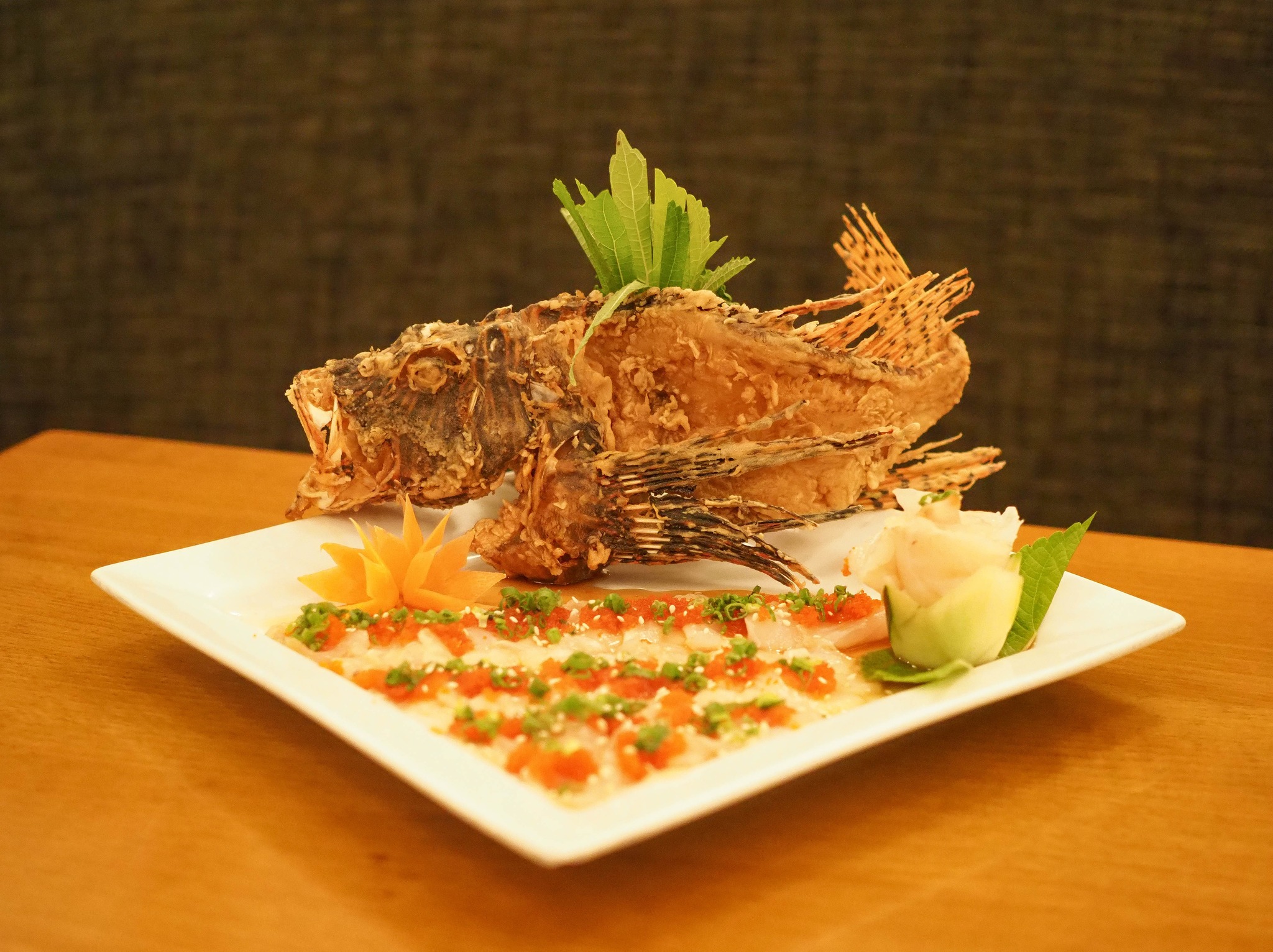
Lionfish served raw, as sashimi, at Sake Cafe in Pensacola. Pam LeBlanc photo
Explore Tarkiln Bayou State Park
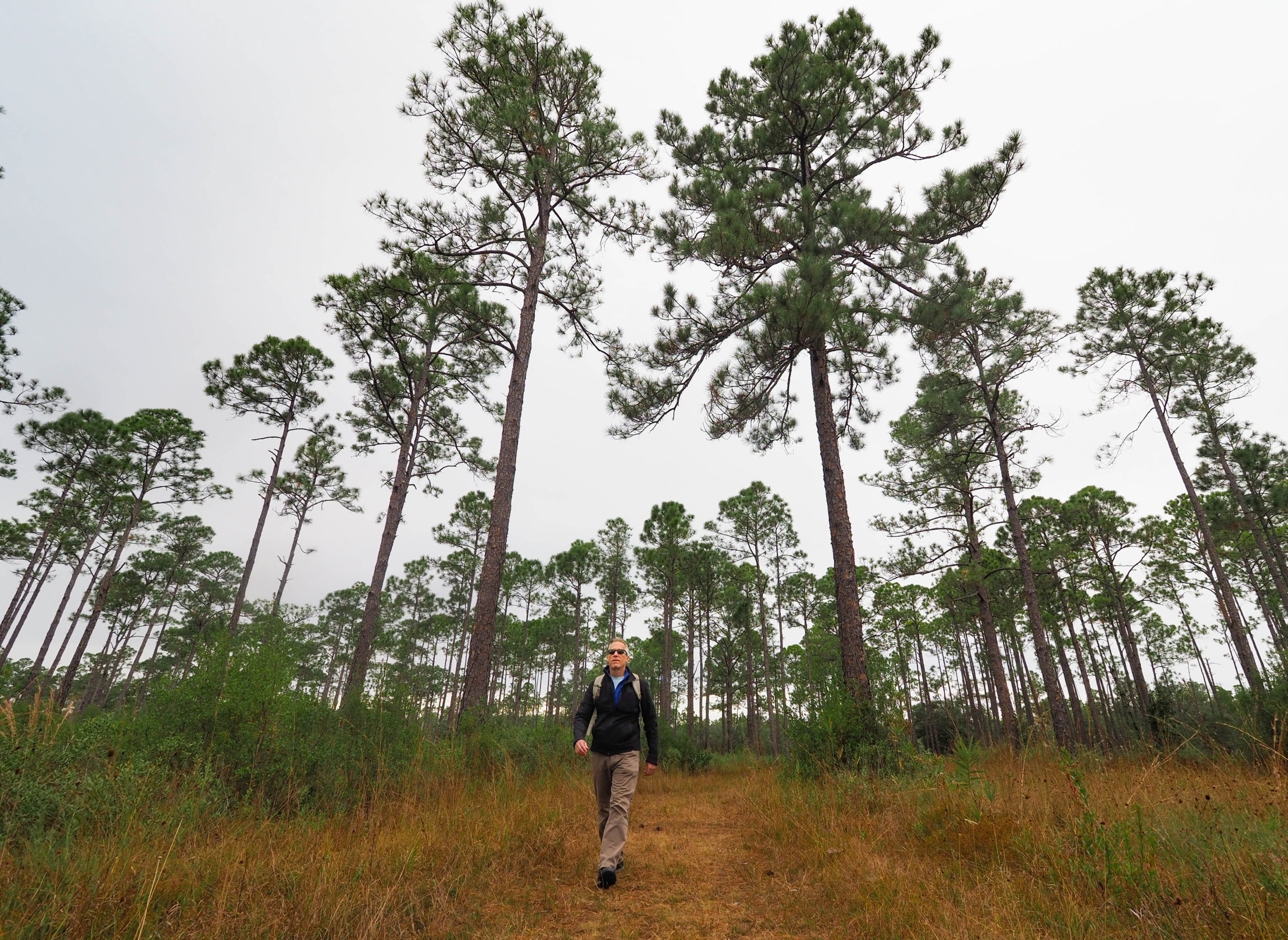
Chris LeBlanc hikes at Tarkiln State Park near Pensacola. The park is known for its population of carniverous plants. Pam LeBlanc photo
We planned to dive the USS Oriskany, an aircraft carrier sunk offshore to create an artificial reef in 2004, but conditions were too rough. Instead, we drove west toward the Alabama border, to Tarkiln Bayou State Park.
In the spring, visitors can get up-close views of four species of carnivorous pitcher plants. Insects slide into the leafy, funnel-shaped blooms of the plants and can’t climb back out. Enzymes dissolve the bugs. Most of the plants were done blooming, but we still found two types – the white-topped pitcher plant and a single purple pitcher plant, tucked low to the ground on a side trail. Keep an eye out – bald eagles are frequently spotted here.
Get bushwacked at the Flora-Bama

The Flora-Bama Lounge in Orange Beach, Alabama, is known for a frozen drink called the Bushwacker. Pam LeBlanc photo
Continue just a few more miles down the highway and you’ll come to the famous Flora-Bama Lounge, Package & Oyster Bar, which spans the state line (which was moved to its current site in 1962). Today, the famous bar, with its rambling design and dimly lit interior, is known for live music, an annual Interstate Mullet Toss and Sunday morning church services. It’s also known for a frozen drink called the Bushwacker made with rum, Kahlua, crème de cacao, amaretto, cream of coconut and ice cream. One word: Yum.
Winter events in and around Pensacola
Looking for an excuse to go? All kinds of festive events pack Pensacola’s holiday calendar.
Throughout December and into January, downtown glitters under a canopy of half a million white lights during the First City Lights Festival. A Holiday Lighted Boat Parade, featuring boats of all shapes and sizes, sets sail Dec. 3, and on Dec. 4, Santa Claus himself closes out the annual Surfing Santa Beach Parade. On Dec. 10, catch the Cox Pensacola Christmas Parade, featuring more than 100 entries, eight bands and the Blue Angels flight team. Time your visit for New Year’s Day, and plunge in the ocean behind the Flora-Bama Lounge during the Polar Bear Dip. And in February, Pensacola hosts one of the largest Mardi Gras celebrations in the country, complete with an illuminated night parade, a beach parade, beads, and Moon Pies.
If You Go

Getting there:
United, Delta and American Airlines all fly into Pensacola. But from Austin you’ll have to connect through Atlanta, Dallas, Houston, or Charlotte.

Stay:
Stay at the Holiday Inn Express Pensacola Downtown, the hippest Holiday Inn Express I’ve ever seen. (Plus, free popcorn and cookies in the lobby.) It’s centrally located, and an easy walk to museums, shops, and restaurants on Palafox Street.
Do:
Go spearfishing for invasive lionfish, kayak, dive a sunken aircraft carrier, hike, kayak, or explore shops and museums in the historic downtown district.
Eat & Drink:
Don’t miss 5 Sisters Blues Café for soul food in Pensacola’s historically Black business district. Jaco’s Bayfront Bar & Grille makes an excellent fresh grouper sandwich (served with a view of the America’s Cup sailboat American Magic, docked nearby). Eat invasive lionfish at the incredible Sake Café.

Pro Tip:
For picnic supplies, stop by Joe Patti’s Seafood. The famous market sells fresh-off-the-boat Florida seafood as well as deli foods like cheese, bread, and spreads.








